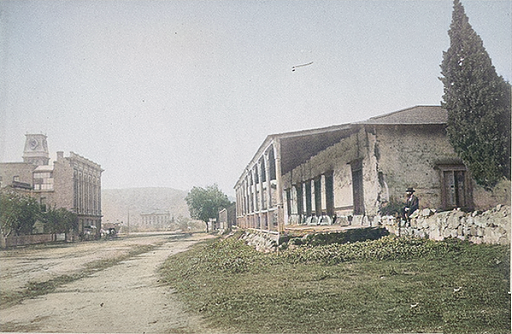Brief
History:
Santa Barbara (Spanish:
Santa Bárbara, meaning 'Saint Barbara')
is a coastal city in Santa Barbara
County, California, of
which it is also the county seat.
Situated on a south-facing section of
coastline, the longest such section on
the West Coast of
the United States excepting
Alaska, the city lies between the
steeply rising Santa Ynez Mountains and
the Pacific Ocean.
Santa Barbara's climate is often
described as Mediterranean, and the city
has been dubbed "The American Riviera".
Spanish explorer Juan Rodríguez
Cabrillo, sailing for the Kingdom of
Spain, sailed through what is now called
the Santa
Barbara Channel in 1542, anchoring
briefly in the area. In 1602, Spanish
maritime explorer Sebastián Vizcaíno
gave the
name "Santa Barbara" to the
channel and also to one of the Channel
Islands.
A land expedition led by Gaspar de
Portolà visited around 1769, and
Franciscan missionary Juan Crespi, who
accompanied
the expedition, named a large
native town "Laguna de la Concepcion".
Cabrillo's earlier name, however, is the
one that has
survived.
Presidio of Santa Barbara.
The first permanent European
residents were Spanish missionaries and
soldiers under Felipe de Neve, who
arrived in 1782
and constructed the Presidio. They
were sent to both secure the Spanish
claim to the region and to convert the
indigenous
peoples to Catholicism. Many of
the Spaniards brought their families
with them, and those formed the nucleus
of the small
town – at first just a cluster of
adobes – that surrounded the Presidio of
Santa Barbara. The Santa Barbara Mission
was
established on the Feast of Saint
Barbara, December 4, 1786. It was the
tenth of the California Missions to be
founded by the
Spanish Franciscans.[17] It was
dedicated by Padre Fermín Lasuén, who
succeeded Padre Junipero Serra as the
second
president and founder of the
California Franciscan Mission Chain. The
Chumash laborers built a connection
between the
canyon creek and the Santa Barbara
Mission water system through the use of
a dam and an aqueduct. During the
following
decades, many of the natives died
of diseases such as smallpox, against
which they had no natural immunity.
|

